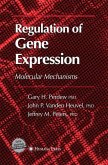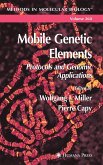As the major task of sequencing the human genome is near completion and full complement of human genes are catalogued, attention will be focused on the ultimate goal: to understand the normal biological functions of these genes, and how alterations lead to disease states. In this task there is a severe limitation in working with human material, but the mouse has been adopted as the favored animal model because of the available genetic resources and the highly conserved gene conservation linkage organization. In just of ten years since the first gene-targeting experiments were p- formed in embryonic stem (ES) cells and mutations transmitted through the mouse germline, more than a thousand mouse strains have been created. These achievements have been made possible by pioneering work that showed that ES cells derived from preimplantation mouse embryos could be cultured for prolonged periods without differentiation in culture, and that homologous rec- bination between targeting constructs and endogenous DNA occurred at a f- quency sufficient for recombinants to be isolated. In the next few years the mouse genome will be systematically altered, and the techniques for achi- ing manipulations are constantly being streamlined and improved.








